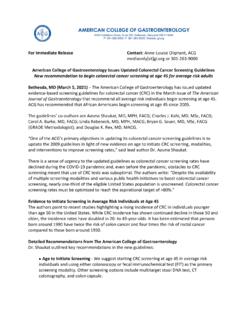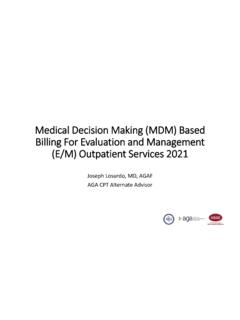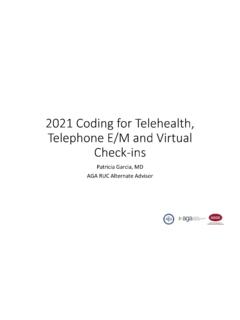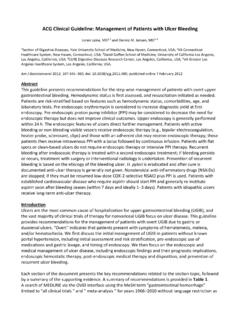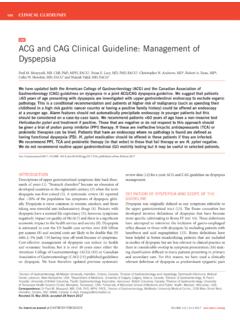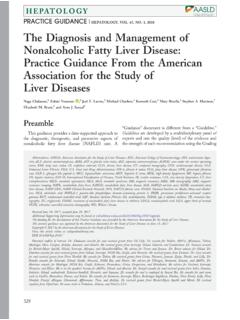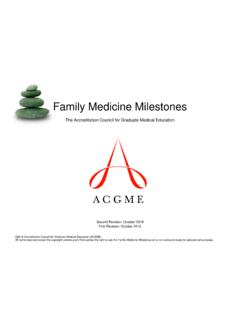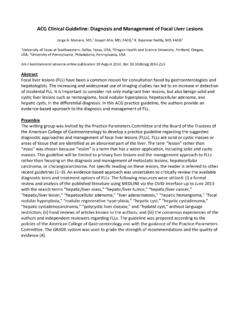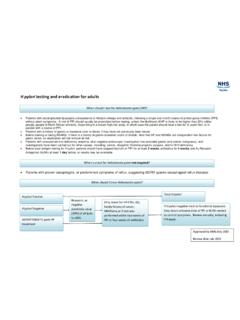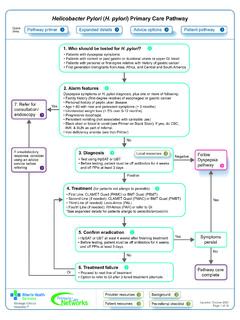Transcription of ACG Clinical Guideline: Management of Irritable Bowel …
1 Downloadedfrom 3 Unq4K4/tOJq29 Zeu9kIOM0 Jya7t9Xm5VL96 Tmh5aDk02hHT8cuv7G2V8sNWYiwTTgaerSokXnEN adZiZfP0quN67 VMQawaT1 KRUN4Fy72xBUy0g7mzCM5o3Xv7 KIYUVfUImPFvm8 DnjpkFl2EY8+Q==on 03/11/2021 Downloadedfrom 3 Unq4K4/tOJq29 Zeu9kIOM0 Jya7t9Xm5VL96 Tmh5aDk02hHT8cuv7G2V8sNWYiwTTgaerSokXnEN adZiZfP0quN67 VMQawaT1 KRUN4Fy72xBUy0g7mzCM5o3Xv7 KIYUVfUImPFvm8 DnjpkFl2EY8+Q==on 03/11/2021 ACG Clinical Guideline: Management of IrritableBowel SyndromeBrian E. Lacy, PhD, MD, FACG1, Mark Pimentel, MD, FACG2, Darren M. Brenner, MD, FACG3, William D. Chey, MD, FACG4,Laurie A. Keefer, PhD5, Millie D. Long, MDMPH, FACG (GRADE Methodologist)6and Baha Moshiree, MD, MSc, FACG7 Irritable Bowel syndrome (IBS) is a highly prevalent, chronic disorder that significantly reduces patients quality of in diagnostic testing and in therapeutic options for patients with IBS led to the development of this first-everAmerican College of Gastroenterology Clinical guideline for the Management of IBS using Grading of Recommendations,Assessment,Development,a ndEvaluation(GRADE) a comprehensive literature search; 9 questions focused on diagnostic testing; 16 questions focused on therapeuticoptions.
2 Consensus was obtained using a modified Delphi approach, and based on GRADE methodology, we endorse thefollowing:Wesuggestthatapositivediagn osticstrategyascomparedtoadiagnosticstra tegyofexclusionbeusedtoimprovetime to initiating appropriate therapy. We suggest that serologic testing be performed to rule out celiac disease in to rule out inflammatory Bowel disease. We recommend a limited trial of a low fermentable oligosaccharides,disacchardies,monosacch arides,polyols (FODMAP) dietin patients with IBS to improve globalsymptoms. We recommendthe use of chloride channel activators and guanylate cyclase activators to treat global IBS with constipation symptoms. Werecommend the use of rifaximin to treat global IBS with diarrhea symptoms. We suggest that gut-directed psychotherapy beused to treat global IBS symptoms. Additional statements and information regarding diagnostic strategies, specific drugs,doses, and duration of therapy can be found in the MATERIAL accompanies this paper J Gastroenterol 2021;116:17 44.
3 ; published online December 14, 2020 INTRODUCTIONI rritable Bowel syndrome (IBS) is a chronic, often debilitating, andhighly prevalent disorder of gut-brain interaction (previously calledfunctional gastrointestinal [GI] disorders) (1,2). In Clinical practice,IBS is characterized by symptoms of recurrent abdominal pain anddisordered defecation (1,3). The Rome IV criteria, derived by con-sensus from a multinational group of experts in thefield of disordersof gut-brain interaction, can be used to diagnose IBS for both clinicaland research purposes (4). Patients with IBS should report symp-toms of abdominal pain at least once weekly (on average) in asso-ciation with a change in stool frequency, a change in stool form, and/or relief or worsening of abdominal pain related to defecation(Table 1). Although bloating is a commonly reported symptom, itspresence is not mandatory to accurately diagnose IBS (4).
4 IBS is a common source of referrals to gastroenterologists with aprevalence of approximately in the United States,United Kingdom, and Canada and affects most commonly womenand individuals younger than 50 years (5). Symptoms of IBS greatlyaffect patients quality of life (6,7), and this marked negative impactis highlighted by 1 study which reported that a majority of patientswouldgiveup10 15 years of life expectancy for an instant cure fortheir condition and by another study which found that patients withIBS would accept a median risk of sudden death of 1% if a hypo-thetical medication could cure their IBS symptoms (8,9).IBS causes a significant burden to health care systems highlighted in a recent review article, direct medical costs at-tributed to IBS in the United States, excluding prescription andover-the-counter medications, are estimated to be as high as$ $10 billion per year (10).
5 High levels of health care resourceutilization, testing that is often unnecessary or performed too fre-quently, and significant regional variation in testing and treatmentfurther contribute to substantial direct and indirect costs (11,12).The Management of IBS has been examined in several recentmonographs, reviews, and position statements (1,3,4). Thesepublications summarize and review data and provide manage-ment recommendations based on meta-analysis and/or expertopinion. However, essential diagnostic and treatment recom-mendations have not been formally evaluated by the American1 Division of Gastroenterology and Hepatology, Mayo Clinic, Jacksonville, Florida, USA;2 Division of Gastroenterology and Hepatology, Cedars-Sinai, Los Angeles,California, USA;3 Division of Gastroenterology and Hepatology, Northwestern University, Chicago, Illinois, USA;4 Division of Gastroenterology and Hepatology,University of Michigan, Ann Arbor, Michigan, USA;5 Icahn School of Medicine at Mount Sinai, New York, New York, USA;6 Division of Gastroenterology andHepatology, University of North Carolina, Chapel Hill, North Carolina, USA;7 Division of Gastroenterology and Hepatology, University of North Carolina, College ofMedicine, Charlotte, North Carolina, :Brian E.
6 Lacy, PhD, MD, FACG. E-mail: April 15, 2020; accepted October 8, 2020 2020 by The American College of GastroenterologyThe American Journal ofGASTROENTEROLOGYCLINICAL GUIDELINES17 Copyright 2020 by The American College of Gastroenterology. Unauthorized reproduction of this article is of Gastroenterology (ACG) using rigorous Grading ofRecommendations, Assessment, Development, and Evaluation(GRADE) methodology. This ACG Clinical guideline was de-veloped to provide clinicians with high quality evidence, whenavailable, to support essential Clinical questions relevant to thediagnosis and Management of IBS (Table 2).SCOPE OF THE GUIDELINE AND METHODOLOGYThis guideline will focus on key issues related to the diagnosis andmanagement of IBS. Given the complexity of IBS, it is not possibleto address all diagnostic and Management issues.
7 Clinically rel-evant questions were developed by a panel of experts who focustheir Clinical and research efforts on disorders of gut-brain in-teraction (previously called functional GI disorders). The groupformulated 25 key statements that followed the population, in-tervention, comparator, and outcome format to guide the searchfor evidence (Table 3). These questions were answered by per-forming a comprehensive international literature search (seemethods below). This guideline focuses primarily on the evalu-ation and Management of patients in North America, as not alldiagnostic tools ( , 23-seleno-25-homotaurocholic acid [SeH-CAT]) and medications for IBS ( , pinaverium) are available inNorth America. Over the past decade the US Food and DrugAdministration (FDA) has issued guidelines , suggesting thattherapies for IBS symptoms be evaluated with an emphasis onglobal symptom improvement.
8 As such, when applicable, ques-tions were developed with an emphasis on evaluating global re-sponse to IBS symptoms for each therapy. An inherent limitationto this approach is that not all therapies were evaluated in double-blind, randomized, placebo-controlled trials with the primaryendpoint being an improvement in global IBS symptoms. Whereappropriate, this is mentioned in the text. Finally, it is worthnoting that the strength of the recommendation, as describedbelow, is based on an overall review of the literature and does notinfer or imply that an individual patient may or may not receivebenefits from the specific therapy individualized literature search was performed for eachpopulation, intervention, comparator, and outcome questionwhich involved searching MEDLINE, EMBASE, PubMed, andthe Cochrane Controlled Trials Register from inception to Feb-ruary 1, 2020.
9 The search emphasized randomized, placebo-controlled trials with at least 10 subjects and study length$4weeks. Abstracts, case reports, uncontrolled studies, and studiesless than 4 weeks in duration were not included. References ofarticles meeting the search criteria were reviewed for additionalrelevant studies. Trained GRADE methodologists analyzed thedata to assess the quality of evidence and given strength of rec-ommendation. The quality of evidence was expressed as high(estimate of effect is unlikely to change with new data), moderate,low, or very low (estimate of effect is very uncertain). GRADE uses objective reproducible criteria to determine quality of evi-dence and risk of bias among relevant studies, including evidenceof publication bias, unexplained heterogeneity among studies,directness of the evidence, and precision of the estimate of effect(13).
10 A summary of the quality of evidence for the statements isgiven in Table 4. The strength of recommendation is given aseither strong (most patients should receive the recommendedcourse of action) or conditional (many patients will have thisrecommended course of action, but different choices may beappropriate for some patients). In the case of conditional rec-ommendations, a greater discussion is warranted, so that eachpatient can arrive at a decision based on their values and pref-erences. The strength of recommendation is based on the qualityof evidence and risks vs benefits (14).Weusedamodified Delphi approach to achieve consensus. Eachstatement was presented during a monthly phone conference andvoted on by all expert authors. Statements were revised and theneither presented again on a phone conference or circulated by face-to-face meeting was held.
